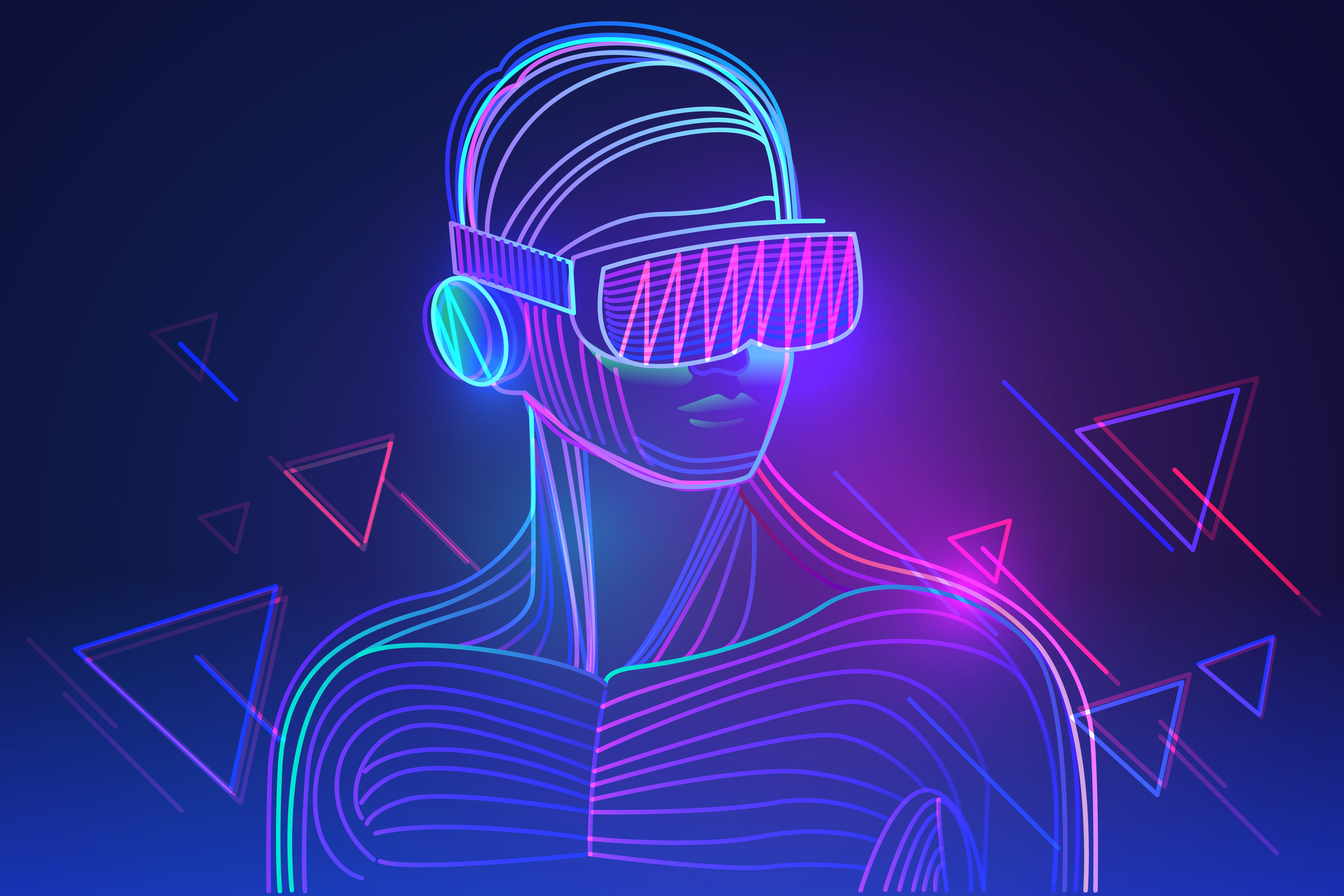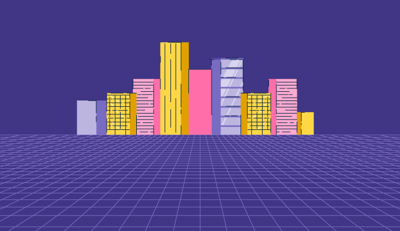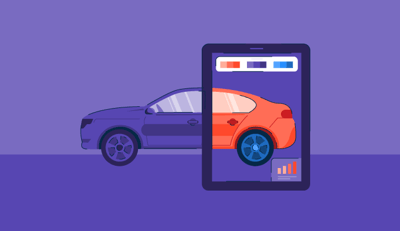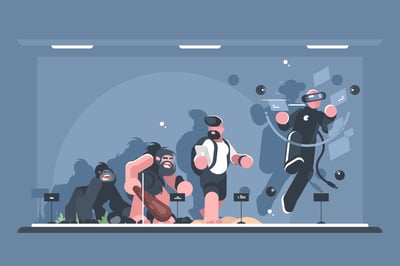
Mixed reality apps (MR) are taking the internet by storm.
Following the success of TikTok and Pokémon GO, it’s no wonder that an increasing number of developers are putting their faith in virtual and augmented reality (VR/AR) features.
We’re talking about a huge opportunity for a range of industries, but particularly for events. Whether you’re running a conference, exhibition, or music festival, you’ll likely need a way to boost attendee engagement and sponsor satisfaction, in which case, MR has the answer.
Before we go into the natural connection between MR and events, let’s take a look at the opportunity in a little more detail.
In basic terms, mixed reality works by overlaying images and videos onto the user’s view of the real world. Both augmented and virtual reality—two terms that we’re becoming increasingly aware of—are subsets of the MR spectrum. It might sound techy, but MR, AR, and VR are all mainstream considerations, having delivered some of the best viral moments in recent years.
Gaming apps like Harry Potter: Wizards Unite have taken the MR craze to new levels. TikTok, an app that enables users to lip-sync and act their way into internet stardom, was one of the digital success stories of 2019. Brands are seeing MR-powered apps as a way into millennial and gen-z audiences, and they’re only just getting started.
2019 will see around three billion downloads for MR apps. Not bad for a nascent format, but there is room for improvement. In 2024, that figure will be at 10 billion installations, signaling a growth of 170%.
If you’re looking for a good explanation as to how MR will achieve such a steep growth trajectory, look no further than Pokémon GO. The brainchild of Niantic broke Guinness World Records for downloads and revenue in its first month, earning $200 million after being installed over 130 million times.
While the use of a multi-billion dollar franchise was always going to make for a good starting point, analysts praised the game for promoting an active, healthy lifestyle. It encourages players to get outside and provides incentives for traveling certain distances. Unlike regular games that allow usage only via the couch, when you lock into a three-hour session on Pokémon GO, you might actually feel like you got something in return.
The game appeals to a wide audience, comprised of kids as well as the same adults who enabled Pokémon to explode initially in the late 90s. The game is addictive, rewarding its users for achievements, and doesn’t have a definitive end, allowing for infinite play. It also boasts a global community of players—something that has allowed it to grow fast and organically.
But it’s not all good news, as Niantic eventually found out.
One of the biggest challenges faced by app developers is in retaining their user base.
“Despite temptations to continually grow the app user base, app developers must have a primary focus on retaining existing users. Successful mixed reality app developers, Niantic and Snap, have continued to leverage their significant user bases by ensuring that app content is consistently refreshed, therefore benefiting from continued user spend.”
- Sam Barker, Juniper
Pokémon GO was an overnight success. Nevertheless, despite a constant roll of updates, its creators could only watch as the game’s population of daily users dropped from 28.5 million to five million by the end of its first year.
This sounded yet another alarm about the shelf-life of apps that go viral. MR is designed to enhance what we see in our daily lives. However, when users grow accustomed to that view, they will head for the next version of escapism. While brands should definitely consider the longevity of individual apps, this is less of a consideration in the world of events, where experiences tend to be more fleeting anyway.
The events industry is currently undergoing a digital transformation. We’ve seen mobile apps become the attendee’s ultimate companion, allowing them to browse agendas, bookmark key sessions, and chat with other delegates, all in one place.
Within this transformation, we’ve seen another trend emerge. Gamification, the process of using game mechanics and strategies to achieve a desired outcome, has established itself as a key method of driving engagement with attendees.
Both developments have created an opportunity for MR to shine. For example, at EventsCase, our own developers have been working on apps that use a form of AR to turn basic objects (e.g. a sign) into pieces of a jigsaw puzzle. Attendees can use their smartphone camera to take pictures of each object to complete the image and win a prize.
Gamification works on a few different levels. For one, the attendees are encouraged to head for areas they perhaps wouldn’t have explored otherwise. Meanwhile, by using a sponsor’s furniture as the pieces (e.g. their signage or event stand), organizers are able to create a handy commercial tie-in.
There are several reasons why events and MR are a great fit, but the main ones are:
|
Now you’re aware of how MR works, you might want to consider how the format can work for your event and attendees. Regardless of the type of event you’re running, we’ve found five golden rules to always stand true.
Don’t forget that games are meant to complement the attendee experience, not override it. Steer clear of anything that could alienate some of the less tech-oriented members of your audience.
Your app should have simple instructions to support a basic but addictive framework. Video filters and puzzles are ideal because anyone can get started on them right away. Also, remember to keep everything fun and light-hearted. That includes B2B events, where games can offer an escape from the norm.
The main issue developers have when launching a new game is adoption. How do you get people to head to the App Store or Google Play on their own accord to download something? In your case, this should be less of an issue due to the presence of existing technology.
Most events will use a mobile app to host information on speakers, passes, and the agenda. Remove an extra touchpoint by making your game available through the same platform rather than as a separate app.
MR games tend to be monetized through a mix of advertising and in-app purchases. Rather than exploring these options, we’d advise promoting your event sponsors instead.
Games offer a very natural way of introducing people to brands. Just ask some of the sports manufacturers that are taking advantage of downloadable content on games like FIFA. Here, users can purchase boots from brands like Puma, Adidas, and Nike to feature on their character or team.
Your game could have an official sponsor, promoted whenever someone accesses the MR feature. You could also try directing people to exhibitors’ stands.
Drive usage for your MR game by offering a big prize for top performers and a smaller gift for those completing certain actions.
To see how this might work, think about our jigsaw example and how it directs people to exhibitors’ locations. Every user taking a photo of the specified object could win a hidden prize—perhaps a piece of branded merchandise or a $10 gift card. This encourages more gameplay and satisfaction among both attendees and sponsors.
Finally, if you’ve put the time and effort into creating an MR-powered game, don’t forget to let people know it’s there. Use push notifications to bring the message out to active users. For those yet to download your event app, it’s always worth placing signs around the venue.
If history has taught us anything, it’s that technology develops at a rapid pace. By 2024, we could be talking about a completely different subset of games, or lamenting the demise of apps altogether.
View MR as a consideration for the present. Users are clearly reacting well to the concept and it’s important for events to stay ahead of current trends. If you need a way of getting people closer to your experience, content, and sponsors, MR could be just the ticket.
Make sure you’re using the right augmented reality software to help you create your MR app.
Jose is the CEO and Co-Founder of EventsCase, the first truly all-in-one event management software. A thought leader within the events space, Jose has delivered talks at Google Campus, City University and Cass Business School, and is a regular contributor across tech and events publications.
Metaverse means "beyond the universe” and was introduced to us by authors like Neal Stephenson...
 by Sagar Joshi
by Sagar Joshi
Augmented reality has evolved from being a nascent technology to a standard go-to tech.
 by Sagar Joshi
by Sagar Joshi
Let’s go back to move forward.
 by Bridget Poetker
by Bridget Poetker
Metaverse means "beyond the universe” and was introduced to us by authors like Neal Stephenson...
 by Sagar Joshi
by Sagar Joshi
Augmented reality has evolved from being a nascent technology to a standard go-to tech.
 by Sagar Joshi
by Sagar Joshi


